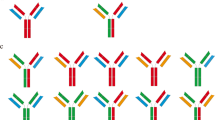Abstract
In laboratory scale therapeutical protein production, cell clumps form typically in shake flasks, which hinders cell growth and decreases protein yield. To minimize clumps during the culture of Chinese hamster ovary cells, we employed the combination of two reagents, dextran sulfate (DS) and recombinant trypsin (r-trypsin). Our results showed that both DS and r-trypsin could diminish cell aggregation when adding them respectively, but clumps were still noticed obviously. In order to further mitigate cell agglomerate, a combination of 1.2 g/L DS and 8.0 mg/L r-trypsin was employed and no clumps were found under the bright field microscope. Strikingly, the highest viable cell density of combination group was increased from 5.12 × 106 to 7.13 × 106 cells/mL, while the integral of viable cells concentration was raised from 35.13 × 106 to 60.87 × 106 cells·days/mL, and the culture period was prolonged by 4 days. In addition, the antibody integrity was maintained in the combination group compared with that of the control.




Similar content being viewed by others
References
Dee KU, Shuler ML, Wood HA (1997) Inducing single-cell suspension of BTI-TN5B1-4 insect cells. I. The use of sulfated polyanions to prevent cell aggregation and enhance recombinant protein production. Biotechnol Bioeng 54:191–205
Dorai H, Kyung YS, Ellis D, Kinney CA, Lin C, Jan D, Moore G, Betenbaugh MJ (2009) Expression of anti-apoptosis genes alters lactate metabolism of Chinese hamster ovary cells in culture. Biotechnol Bioeng 103:592–608
Edwards JG, Campbell JA, Robson RT, Vicker MG (1975) Trypsinized BHK21 cells aggregate in the presence of metabolic inhibitors and in the absence of divalent cations. J Cell Sci 19:653–667
Golden JW, Linke J, Schmechel S, Thoemke K, Schiff LA (2002) Addition of exogenous protease facilitates reovirus infection in many restrictive cells. J Virol 76:7430–7443
Hacker DL, Chenuet S, Wurm FM, Flickinger MC (2009) Chinese hamster ovary cells, recombinant protein production. In: Flickinger MC (ed) Encyclopedia of industrial biotechnology. Wiley, New York, pp 1–8
Li L, Qin J, Feng Q, Tang H, Liu R, Xu L, Chen Z (2011) Heparin promotes suspension adaptation process of CHO–TS28 cells by eliminating cell aggregation. Mol Biotechnol 47:9–17
Liu M, Goudar CT (2013) Gene expression profiling for mechanistic understanding of cellular aggregation in mammalian cell perfusion cultures. Biotechnol Bioeng 110:483–490
Liu C, Hong L (2001) Development of a shaking bioreactor system for animal cell cultures. Biochem Eng J 7:121–125
Moreira JL, Alves PM, Feliciano AS, Aunins JG, Carrondo MJT (1995) Serum-free and serum-containing media for growth of suspended BHK aggregates in stirred vessels. Enzym Microb Technol 17:437–444
Shibeshi W, Abraham G, Kneuer C, Ellenberger C, Seeger J, Schoon HA, Ungemach FR (2008) Isolation and culture of primary equine tracheal epithelial cells. In Vitro Cell Dev Biol Anim 44:179–184
Steinberg MS, Armstrong PB, Granger RE (1973) On the recovery of adhesiveness by trypsin-dissociated cells. J Membr Biol 13:97–128
Takagi T, Sakakura C, Kin S, Nakase Y, Fukuda K, Shimomura K, Ito T, Fujiyama J, Yamasaki J, Tsujimoto H, Okazaki Y, Hayashizaki Y, Yamagishi H, Hagiwara A (2005) Dextran sulfate suppresses cell adhesion and cell cycle progression of melanoma cells. Anticancer Res 25:895–902
Wurm FM (2004) Production of recombinant protein therapeutics in cultivated mammalian cells. Nat Biotechnol 22:1393–1398
Zanghi JA, Renner WA, Bailey JE, Fussenegger M (2000) The growth factor inhibitor suramin reduces apoptosis and cell aggregation in protein-free CHO cell batch cultures. Biotechnol Prog 16:319–325
Acknowledgments
This research was partly funded by National Natural Science Foundation of China, Ministry of Science and Technology of China (973 and 863 program projects), National Key project for New Drug Development and Manufacture, and Shanghai Commission of Science and Technology as well as special grants from Ministry of Education of China and Shanghai Commission of Education for excellent research team in Oncology and Shanghai Key Project in Oncology.
Author information
Authors and Affiliations
Corresponding authors
Additional information
Yu Jing and Cunchao Zhang have contributed equally to this study.
Rights and permissions
About this article
Cite this article
Jing, Y., Zhang, C., Fu, T. et al. Combination of dextran sulfate and recombinant trypsin on aggregation of Chinese hamster ovary cells. Cytotechnology 68, 241–248 (2016). https://doi.org/10.1007/s10616-014-9774-4
Received:
Accepted:
Published:
Issue Date:
DOI: https://doi.org/10.1007/s10616-014-9774-4




